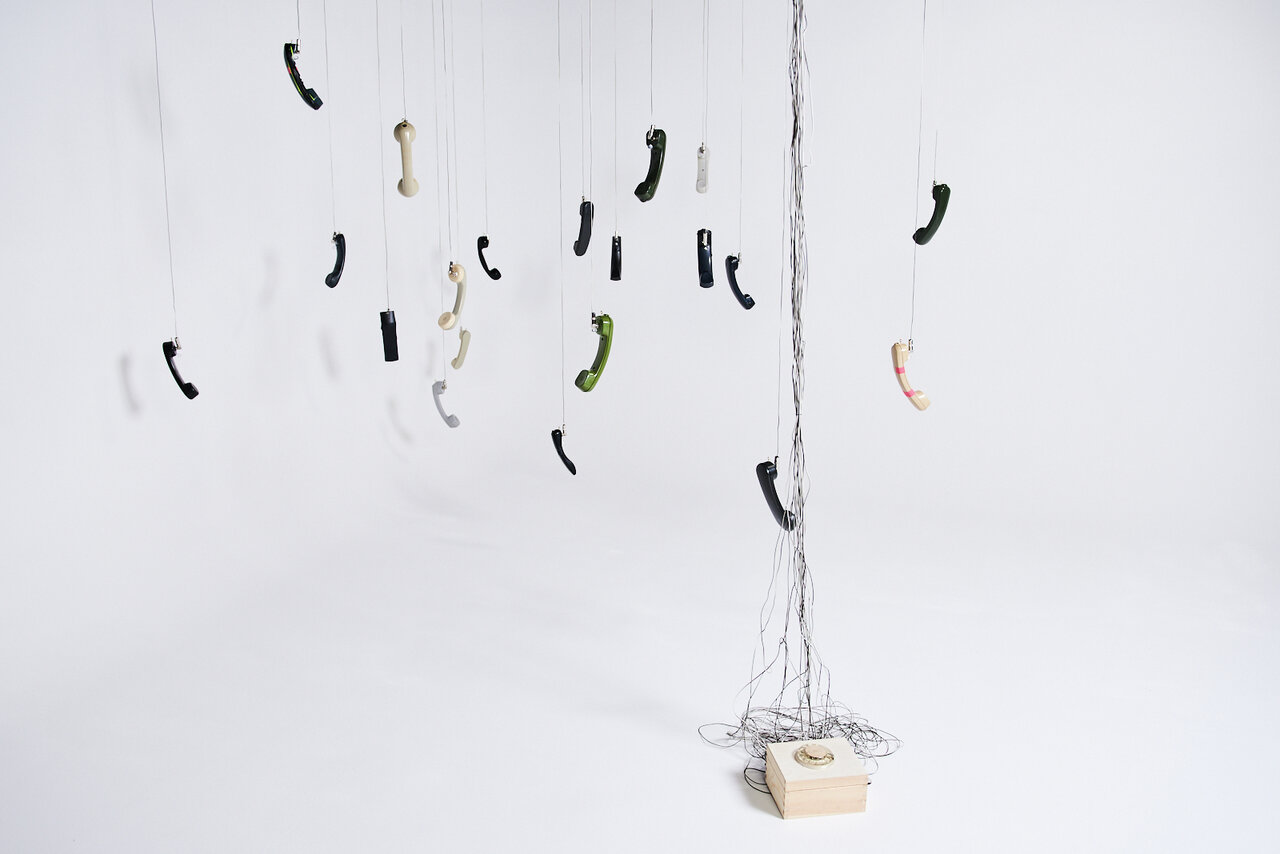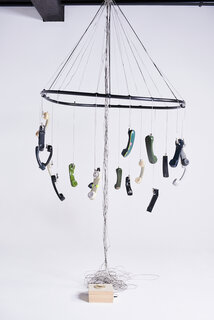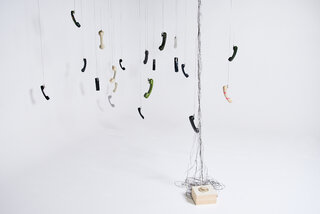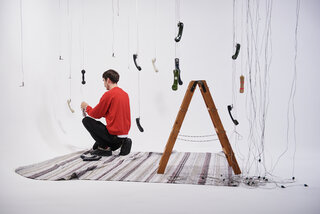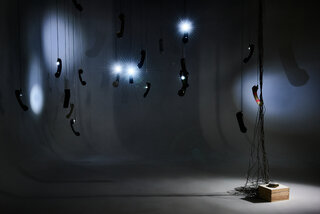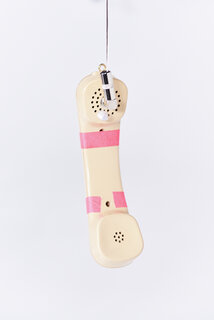Dial Tone Assembly
Dial Tone Assembly is an interactive sound+light installation that involves twenty telephone receivers from deconstructed, 90s type phones.
The phone receivers are placed in a room, connected by cable and controlled with electronic umpulsed to a control unit, which transformes them into a Lofi chiptune orchestra.
The control unit distributes the individual tones to the speakers at random (with a probability of 1 in 20). The audience can influence this: the controller is equipped with a number switch, also known as a rotary dial. Each digit starts a different tonal state - the density of the tones or their octave position changes using the pulse dialing system. Each tonal state is a contemplative, meditative yet retrofuturistic soundpiece by itself. For this, the audience wil be encouraged verbally and/or written didactic.
The rhythm of the tones played is independent of conventional timing systems - a random generator determines the duration between the tones. Only when the audience gets involved with the spatial sounds does a regularity emerge in the irregularity, a swarm-like sound that, in its quality, goes hand in hand with the nostalgia that arises when you use a dial decades after its extinction.The audience is also encouraged to walk around and linger in the installation and let the audio loops have contemplative, mantra-like effects on one’s self.
The work is multi-sensory, the control unit can be touched and used if it is not seen or heard. The tones played by the phone receivers are visualized by the light of LEDs, which might be triggering to photosensitive people. Because of this it also works in the dark.
The core piece of the control unit is an Arduino chip, which is controlled by the rotary dial. The chip sends out signals via Pulse Width Modulation towards the Phone Receivers, changing the pitch and/or length of the tones played. Each tone loop is pulsating and pseudo-recurring, as parts of it are determined by random parameters.
Dial Tone Assembly was developed and built by Markus Rom within a stipend granted by Kulturstiftung des Freistaates Sachsen. It is made to travel and to be adapted to various places.
